Long-Form: Chronically catastrophic chemist Thomas Midgley accidentally poisons the world with a neurotoxin, and Clair Patterson tries to stop him.
Written by Alan Bellows • Non-Fiction • December 2007
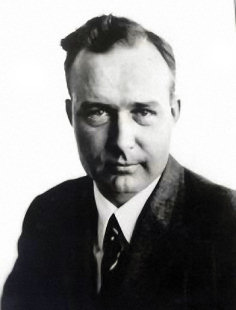
At the turn of the twentieth century, as the age of automobiles was afoot, the newfangled gasoline-powered internal combustion engine began to reach the limitations of the fuel that fed it. As higher-compression designs were tried, an engine-wrecking condition known as “knock” or “ping” would invariably develop. Though they didn’t know it at the time, the noisy destruction was caused when the increased heat and pressure prompted the air/fuel mixture in the cylinder to detonate all at once as opposed to an orderly burn. In spite of this problem, there was a demand for high-compression designs since they provided increased horsepower and fuel efficiency. The latter was particularly appealing in light of America’s forecasted fuel famine.
In 1921, after a long string of inadequate solutions, a clever but chronically catastrophic chemist named Thomas Midgley developed a fuel additive which eliminated ping problems while increasing fuel efficiency. Though the chemical agent eventually gained worldwide acceptance, it left a rash of psychosis, a trail of bodies, an epidemic of crime, and an irreparably damaged environment in its wake.
Mr. Midgley’s anti-knock enterprise began in 1916, when he was tasked by his employer to address the shortcoming in America’s gasoline. Knock was particularly problematic in aviation applications, where high-performance aircraft engines were stymied by America’s low-grade fuel supply. It had long been known that adding a large amount of ethyl alcohol to gasoline would eliminate the engine-injuring knock, however such blended fuels were much more expensive and had an inferior energy-to-weight ratio, making them a poor substitute.
Working for the General Motors Research Corporation over several years, Midgley pinched all manner of substances into his one-cylinder laboratory engine to test for anti-knock properties. After trying hundreds of candidate compounds— including such unlikely materials as camphor and melted butter— Midgley’s boss Charles Kettering pointed out that certain red flowers were able to bloom in the snow. The researchers wondered whether the red color allowed greater heat absorption. Lacking any red dye, the chemists added a splash of violet-colored iodine to their fuel, and found that it dramatically reduced the knock in their test engine. Unfortunately iodine was too corrosive and expensive to consider as an additive, but the results suggested that a small dab of the right chemical might be all they needed. When the researchers later tried some actual red dye, it had no effect; their red-color reasoning had been flawed, but fortuitous.
With the guidance of their accidental discovery, Mr. Midgley’s team tacked sections of the Periodic Table of Elements to the laboratory wall, and used it to single out the compounds with promising properties. This step-by-step process gradually revealed additives of varying effectiveness, but most of the best candidates produced a fragrance that was a grave insult to the olfactories. “I doubt if humanity, even to doubling of fuel economy, will put up with this smell,” Midgley confided in a letter to a colleague at Du Pont. But a few potentials remained among the heavier carbon elements. Neither silicon nor germanium worked too well, but an organometallic tin-based liquid called tetra-ethyl tin nearly silenced the knock, and with no objectionable odor. Only lead remained to be tried, an exciting prospect due to lead’s extreme low cost. Since America’s existing oil fields were dwindling, and imported oil was costly, the discovery of an inexpensive mileage-increasing additive was certain to bring with it a river of money.
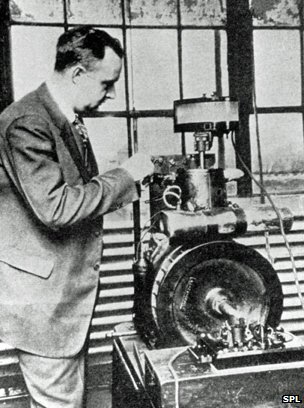
The company chemistry lab cooked up a modest batch of tetra-ethyl lead (TEL) on 09 December 1921, and the researchers squeezed a few drops into their test rig. To their delight, even a tiny amount of the thrifty fluid completely silenced the engine knock. The smidgen of lead had effectively increased the temperature at which the gasoline ignited, a fuel characteristic which would come to be known as its octane rating. Midgley and his men, it is said, danced “a very unscientific jig” in celebration.
Lead had one decisive drawback, however, which was its tendency to cause harmful deposits in human blood, bones, and brains. Lead poisoning had long been known to cause such alarming maladies as spasms, hallucinations, seizures, blindness, kidney failure, brain damage, madness, coma, and death. Even worse, the effects were often caused by “slow, subtle, insidious saturation” rather than significant exposure events. But in spite of lead’s well-known neurotoxic qualities, it was still common in the US in the nineteen-dicketies, used as a major component in food containers, water tanks, house paint, and fruit pesticides, among many other things. Though naturally-occurring lead is extremely rare, it was cheap to refine, and a cinch to manipulate.
As Mr. Midgley labored to perfect his TEL recipe throughout 1922, the world outside of the US was developing a strong preference for all things unleaded. In that very year the League of Nations recommended a ban on interior lead paints due to health concerns, and though Europe complied, the United States declined to adopt the resolution. Midgley received numerous letters from distinguished scientists around the world, urging him away from the “creeping and malicious poison” of tetra-ethyl lead, citing its role in the death of researchers. According to some estimates, each gallon of leaded gasoline burned would emit four grams of lead oxide, resulting in buildup along roadsides and in tunnels, as well as in the air. The warnings went unheeded.
General Motors’ President Pierre du Pont demonstrated his company’s awareness of TEL’s dangers by describing it in a letter as “a colorless liquid of sweetish odor, very poisonous if absorbed through the skin, resulting in lead poisoning almost immediately.” In December 1922, the US Surgeon General wrote to GM regarding growing concerns that environmental lead would become a serious menace to public health. Midgley responded personally, even as he was preparing to winter in Miami for some “fresh air” to treat his own mild case of lead poisoning. The matter of TEL pollution had been given “very serious consideration,” he wrote, but “no actual experimental data has been taken.” Nonetheless, he stated that “the average street will probably be so free from lead that it will be impossible to detect it or its absorption.”
To manufacture and market their incredible new engine-enhancing additive— which had been dubbed Ethyl— General Motors partnered with Standard Oil and Du Pont to form the Ethyl Gasoline Corporation. Charles Kettering was installed as the president, with Thomas Midgley as vice-president. Their product went on sale in 1923, and underwent a couple early tweaks to add lead scavenger compounds to prevent pesky engine deposits. Consumers showed interest, particularly after the Indianapolis 500 motorcar race on Memorial Day 1923, where the first, second, and third-place cars were all fueled by Ethyl gasoline. After that, the fortified fuel enjoyed rapid widespread adoption, and indeed it lived up to its mechanical claims. In a note to Kettering, Midgley estimated that Ethyl would eventually be adopted by at least 20% of the nation’s fuel supply, providing an annual gross profit of about $36 million. His note was unspecific regarding the dancing of any additional unscientific jigs.
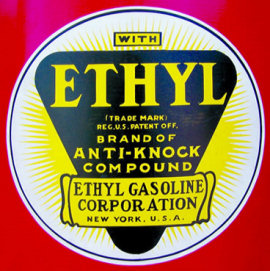
Shortly after the Ethyl factories sprang into action, the mind-dulling effects of lead began to manifest in the workers. Disorientation, impaired judgment, and a staggered gait plagued the lead-polluted employees, and the larger facility in Deepwater came to be known as the “House of Butterflies” owing to the insect hallucinations frequently experienced there. As Ethyl handlers began to turn up at doctors’ offices, hospitals, and morgues, the Ethyl Corporation was quick to blame the victims. “We could not get this across to the boys,” Charles Kettering claimed, “We put watchmen in at the plant, and they used to snap the stuff at each other, and throw it at each other, and they were saying that they were sissies. They did not realize what they were working with.”
In 1923 the Bureau of Mines conducted tests for General Motors, under the stipulation that GM management reserve the right of “comment, criticism, and approval” for all findings prior to their publication. Various animals were exposed to leaded gasoline exhaust from a small engine, and the results stated that the animals were “without harm of any kind.” Some scientists decried the inadequate experiments, pointing out that the animals were only exposed to a passing stream of lightly leaded exhaust, but not to lingering accumulations.
Following the death of one worker and irreversible derangement among others at an Ethyl factory in October 1924, the chief chemist there told reporters, “These men probably went insane because they worked too hard.” Within days, four additional workers from the plant died, and thirty-six others were crippled with incurable neurological damage. The plant, it seemed, had employed many hard workers.
Meanwhile, Ethyl vice president Thomas Midgley addressed the press. “I’m not taking any chance whatever,” he is said to have told gathered journalists as he drizzled Ethyl fluid over his hands and inhaled the fumes. “Nor would I take any chance doing that every day.” The reporters dutifully passed this comforting anecdote on to their readers, and consumers’ concerns were calmed.
As demand for Ethyl additive increased across the country, the US Surgeon General launched a series of public inquiries regarding the health risks of leaded fuel. In response, Ethyl voluntarily withdrew its product from the market for the duration of the investigations. The details of over a dozen Ethyl-related deaths and hundreds of manufacturing injuries were revealed, but per usual these events were blamed on worker’s carelessness and horseplay. “It is a fact that we have a great deal of trouble inducing the men to be cautious,” a company spokesperson claimed, “We have to protect them against themselves.” The Surgeon General’s committee found no firm evidence of a threat to the public, but its members pointed out that its timetable had been insufficient for a thorough investigation, and further studies were strongly suggested.
The public took this finding as a clean bill of health, and soon Ethyl was pumping again. Each year the demand increased, and by 1963 Ethyl and other lead-based anti-knock agents were present in 98% of the US gasoline supply, churning thousands of tons of toxic metal through America’s engines. The lead-peddlers enjoyed rabid federal protection, in one instance successfully suing an unleaded gasoline maker who offered a high-octane alternative which “stands on its own merits” without the need for “dangerous chemicals.”
Unfettered by facts, the US Federal Trade Commission stated that leaded gas was “entirely safe to the health of motorists and the public […] is not a narcotic in its effect, a poisonous dope, or dangerous to the life or health of a customer, purchaser, user or the general public.” Ethyl, it seemed, had been unfairly exonerated. The lead-additive industry might have gotten away with it, too, if it wasn’t for those meddling geochemists.
In the late 1940s, a graduate student named Clair Patterson was experimenting with a new way to measure the age of rocks, with the ultimate goal of determining the age of the Earth itself. His method relied upon the measuring of lead and uranium isotopes in rock samples, but each sample he tested was found to be contaminated with about two hundred times more lead than expected. Befuddled, Patterson established a strictly contamination-controlled laboratory for his geochemistry experiments, and found that the source of the lead contamination was the atmosphere itself. By 1953 he had mass-spectrographed enough sterile samples that the Earth’s age could safely be estimated as 4.55 billion years; a value which still stands today. With that task completed, he directed his attention to the atmospheric lead.
Upon learning that automotive fuel was the source of the contamination, Dr. Patterson began to publish materials discussing the toxic metal’s ubiquity and its probable ill effects. In order to demonstrate the increase of lead in the environment, Patterson proposed taking core samples from pack ice in Greenland, and testing the lead content of each layer— a novel concept which had not been previously attempted. The experiment worked, and the results showed that airborne lead had been negligible before 1923, and that it had climbed precipitously ever since. In 1965, when the tests were conducted, lead levels were roughly 1,000 times higher than they had been in the pre-Ethyl era. He also compared modern bone samples to that of older human remains, and found that modern humans’ lead levels were hundreds of times higher.
The Ethyl corporation allegedly offered him lucrative employment in exchange for more favorable research results, but Dr. Patterson declined. For a time thereafter, Patterson found himself ostracized from government and corporate sponsored research projects, including the a National Research Council panel on atmospheric lead contamination. The Ethyl corporation had powerful friends, including a Supreme Court justice, members of the US Public Health Service, and the mighty American Petroleum Institute. Nevertheless, Patterson was unrelenting, and the resulting rise in scientific and public awareness eventually led to the Clean Air Act of 1970, and a staged phaseout of leaded gasoline. Ethyl and Du Pont sued the Environmental Protection Agency, claiming that “actual harm” must be demonstrated rather than just “significant risk,” an effort which successfully prolonged lead additives’ life by another decade.
By 1986, Ethyl and its ilk were virtually eliminated in the United States, and Americans’ blood-borne lead levels have since dropped by 78%. Lead’s effects, however, may linger much longer. An estimated seven million tons of the stuff were burned through gasoline in Ethyl’s sixty-three years of use; and since lead does not decay, every particle that traversed a tailpipe still lingers in the air today, aside from some that settled onto the ground and into the sea. The contamination has not halted altogether, however; some leaded fuel is still used in aviation, and in automobiles within third-world countries. A few industrial processes also expel lead as a waste product.
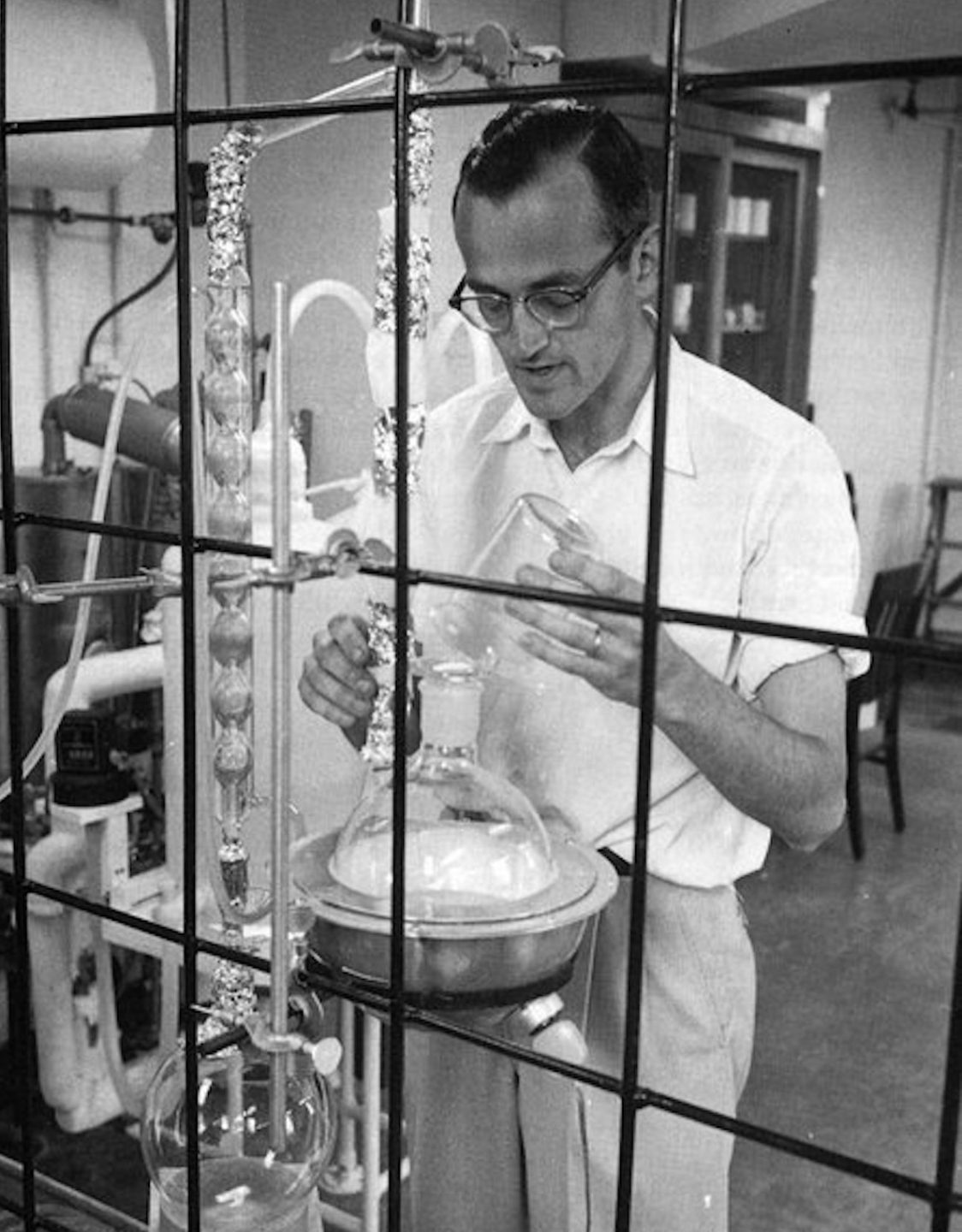
The specific harms done by environmental lead are difficult to quantify. It is known that children are much more apt to absorb the neurotoxic metal than adults, and it is suspected to have stricken many children with behavior problems, learning difficulties, hyperactivity, and breathing complications. Even more troubling, a number of recent studies have shown a strong correlation between atmospheric lead levels and crime rates. A study published in the peer-reviewed journal Environmental Research, which used data spanning more than fifty years, reported a “very strong association” between the exposure of young children to lead, and crime rates twenty years later when they became young adults. This correlation holds true for a wide variety of locales, social conditions, and models of government. The sharp decline in US crime rates which began in the early 1990s dovetails perfectly with the reduction of leaded gasoline in the early 1970s; and other countries which followed suit saw similar declines, also delayed by twenty years. It seems that the lawmakers who claim credit for crime-reducing legislation during that time are probably misplacing their congratulations. In another study, Pittsburgh University researchers found that juvenile delinquents had lead levels four times higher on average than law-abiding adolescents.
As for Thomas Midgley, the father of leaded gasoline continued his distinguished career by inventing chlorofluorocarbons (CFCs), the refrigerants and aerosol propellants which famously destroyed a considerable section of the Earth’s ozone layer before they were banned. In 1935 Midgley gave a presentation to the American Chemical Society predicting the wonders that chemists would discover in the century that followed. He predicted that by 2035 humanity could expect to see, among other things:
Interplanetary travel, involving the production of a substance that will produce more energy per pound than is required to lift that pound out of the Earth’s gravitational field.
The introduction of water on Mars and oxygen on Venus, so those planets will be habitable.
Defensive chemistry to equalize the horror of war chemistry.
Control of age, so that a man may become static at whatever age pleases him.
Chickens as big as pigs, and other animals proportionate until milk cows are mastadons.
The elimination of indigestion.
Dream pills, so that a man, selecting the kind of dream he wants, may assure it by taking the right kind of pill.
The end of visiting; people will stay at home and call on their friends by television.
Agreement by physicists on the physical nature of the universe.
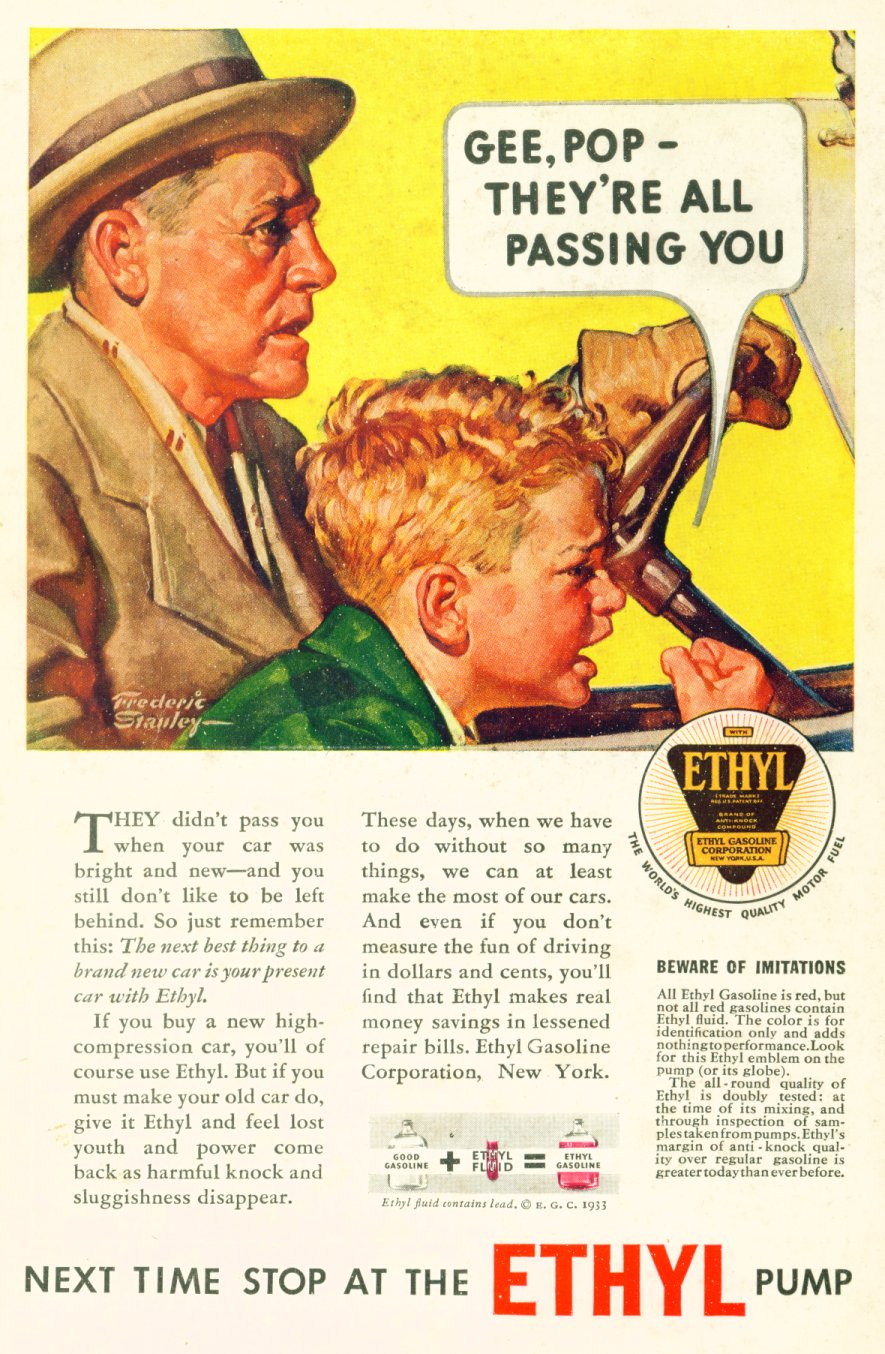
Throughout his career Midgley received an awesome array of accolades and awards for his contributions to chemistry, many of which were later regretted upon discovering the damage done by his innovations. The chemist did not survive to witness this disintegration of his successes, however. After becoming impaired by a polio infection, Midgley devised a machine with motorized pulleys to assist him in rising from bed and turning over. One day in 1944, as his automatic contraption sprang into action, he was ensnared in the cords and strangled to death.
Some historians have argued that Midgley’s tetra-ethyl lead was a necessary evil; one which hastened the progress of efficient engines, thereby advancing the economy and contributing to victory in World War II. It is worth noting, however, that in the early years of Ethyl’s availability, basic refinery advances boosted the base octane of fuel by 20-30 points, whereas Ethyl additive only boosted it by about nine points. In retrospect, Ethyl’s octane improvements were somewhat overstated, and the product owed most of its success to crafty marketing, misleading research, and chronic government incompetence. Whatever Ethyl’s benefits, it saturated the planet with an insidious poison, and the true magnitude of its past, present, and future harm are yet to be known.